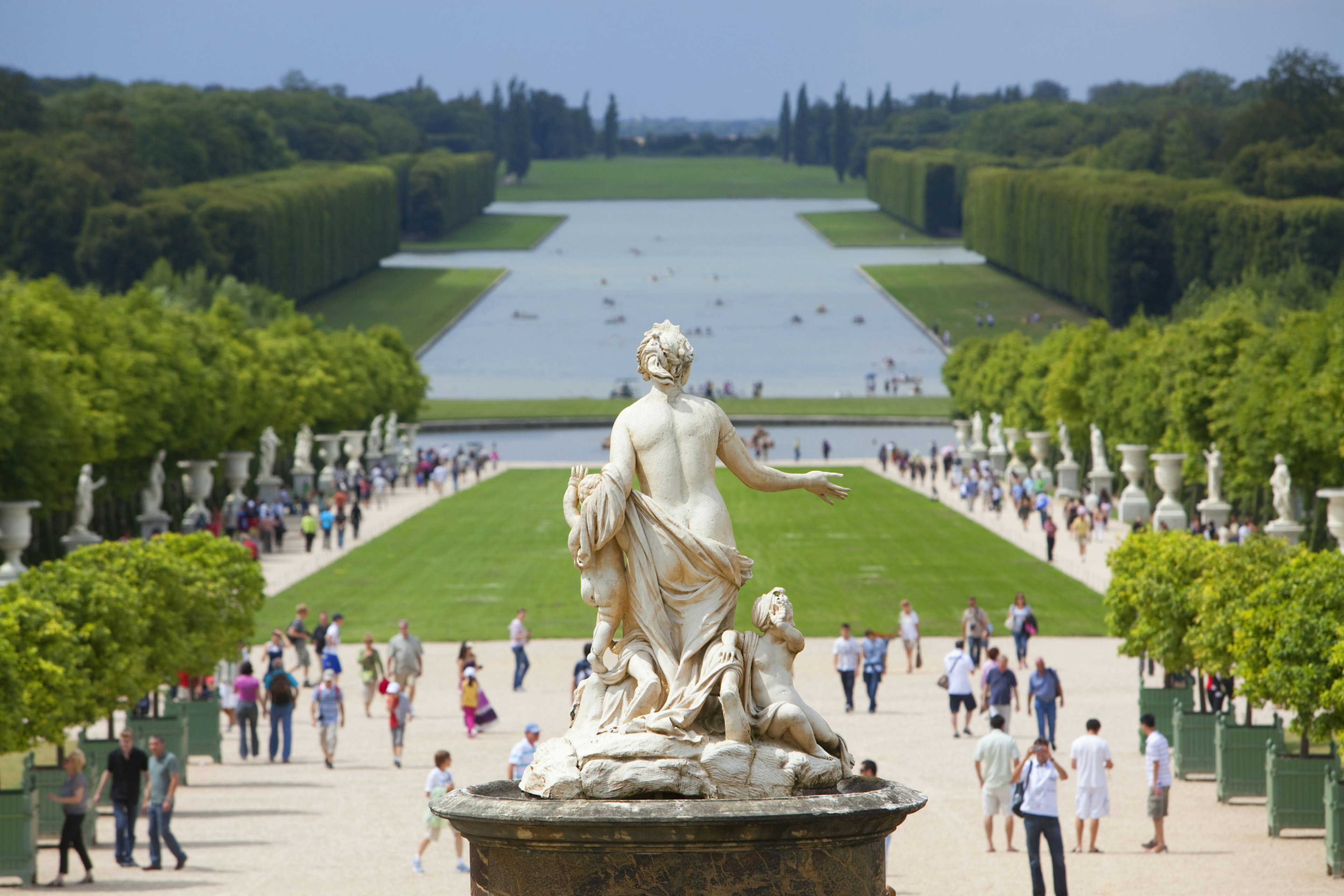Paris' wealth of architectural icons, monumental museums and unmissable dining experiences makes it difficult for visitors to contemplate straying beyond the city limits. Yet on Paris’ doorstep are magnificent châteaux, exquisite gardens, medieval cathedrals, and rambling forests, which can add a new dimension to a holiday in the French capital.
Whether you want to walk in the footsteps of Monet in Giverny, tuck into a medieval banquet in Provins or keep the kids happy at Disneyland, here are seven of the best day-trip destinations within around 90 minutes' travel time from central Paris.
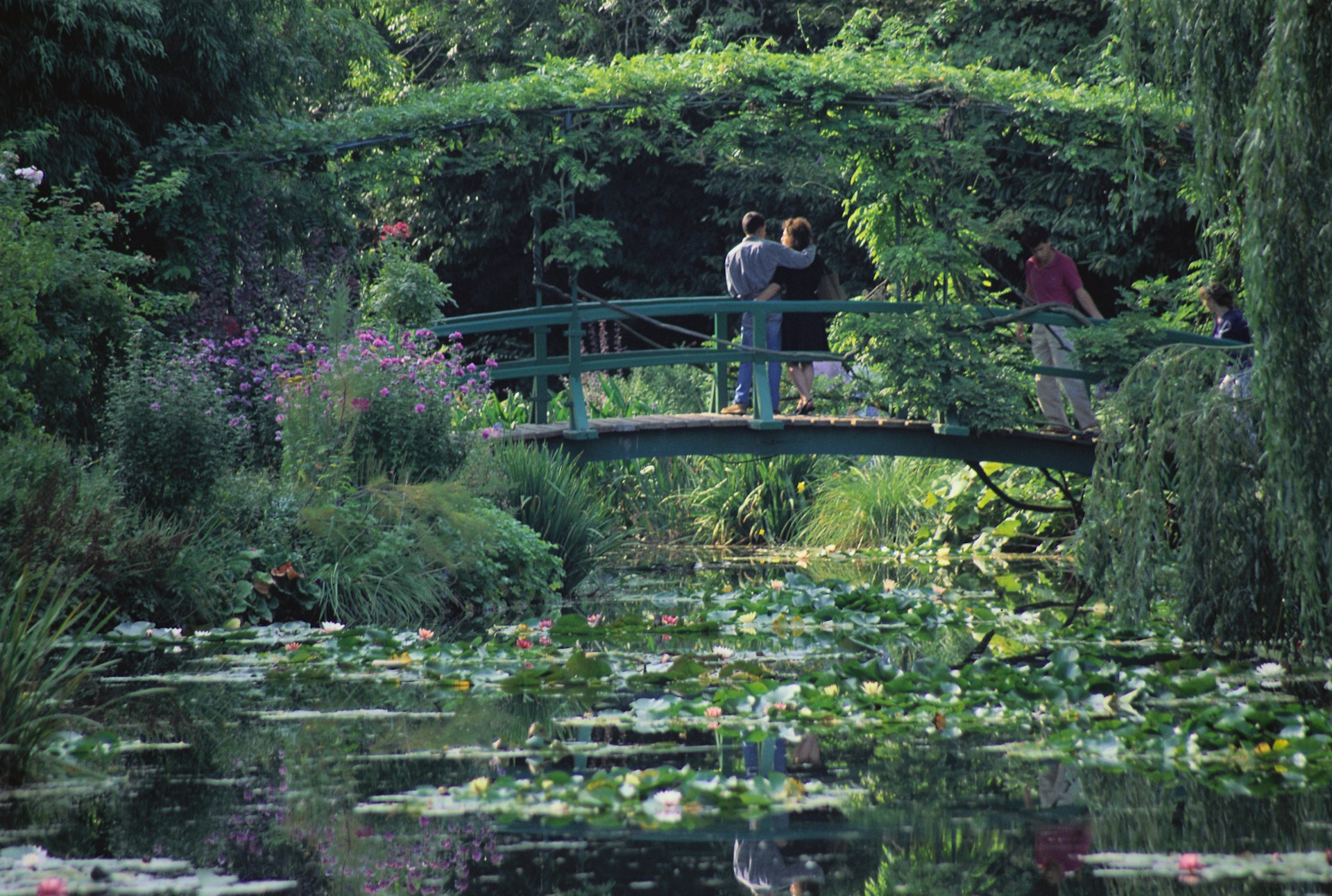
Visit the beautiful gardens at Giverny
Between April to October, when the key sights are open and the gardens are in bloom, a trip to Giverny is a must. The tiny village was home to impressionist Claude Monet from 1883 until his death in 1926. His rose-pink, green-shuttered house, and the flowering gardens he planted and painted – including his Japanese bridge and water lily pond – are now the Maison et Jardins de Claude Monet. You can also visit the painter’s final resting place, his tombstone is located on the eastern side of Giverny's L'église Ste-Radegonde.
For more artsy activities, stroll the galleries of the Musée des Impressionnismes Giverny for an overview on all things related to the Impressionist movement, with lectures, readings, and concerts taking place regularly. Worked up an appetite? Enchanting Michelin-starred inn Le Jardin des Plumes serves sublime modern French cuisine (which almost resemble works of art), while La Capucine Giverny offers staple dishes in a lovely garden setting.
How to get to Giverny: Giverny is 46 miles (74km) northwest of Paris, and can be reached in roughly 1 hour and 30 minutes by car. Trains run from Paris’ Gare St-Lazare to Vernon (45 minutes to one hour, up to 15 daily), which lies 4 miles (7km) to the west of Giverny. Shuttle buses link Vernon with Giverny in season; alternatively you can walk, cycle along a dedicated track or take a taxi.
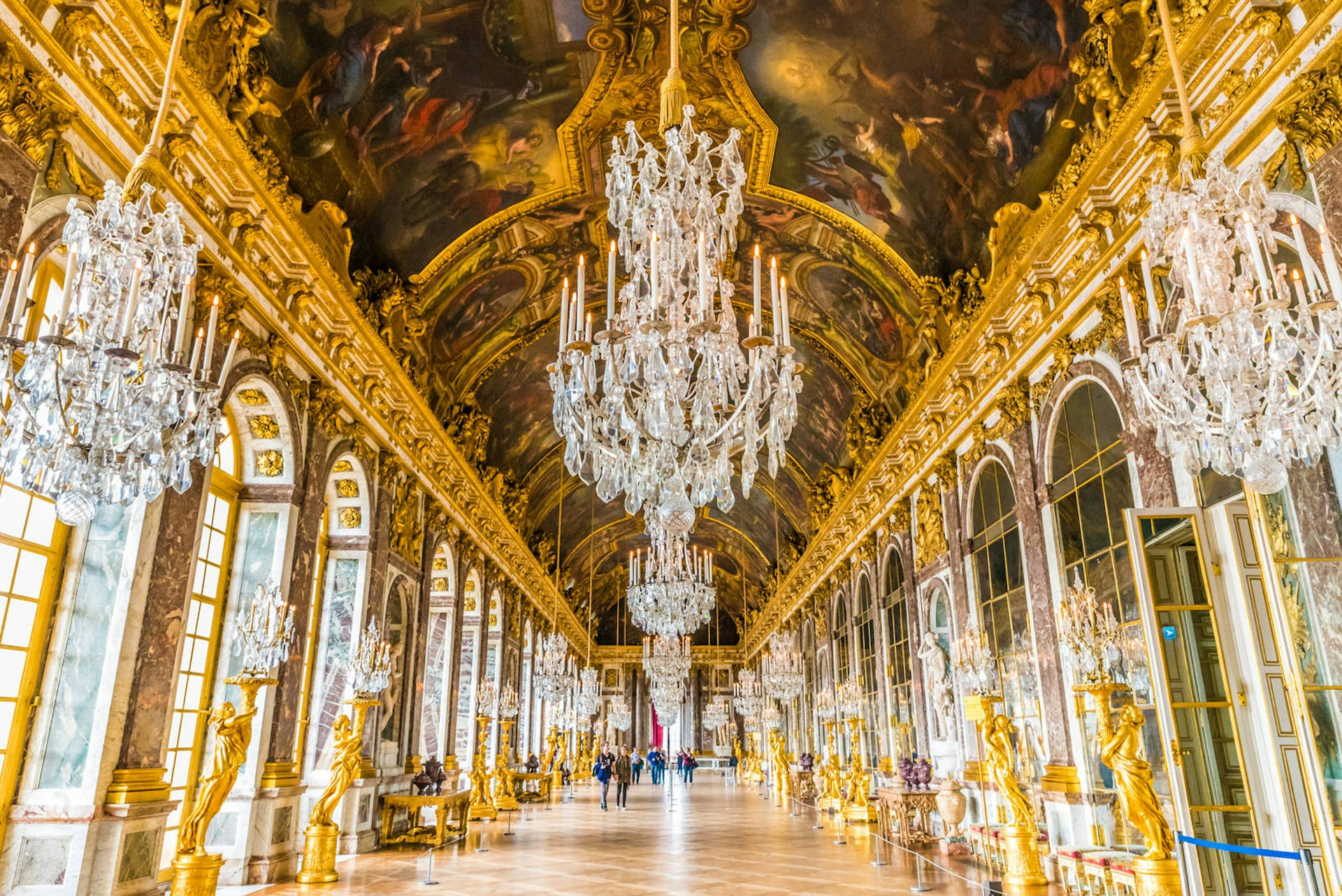
Be dazzled by the riches of the Palace of Versailles
Strolling through the lavishly adorned 700-room baroque palace Château de Versailles – transformed from a hunting lodge by Louis XIV in the mid-17th century and serving as the seat of the royal court until 1789 – gives you an up-close appreciation of the French monarchy's disproportionate wealth and power that eventually sparked the French Revolution (which ultimately led to the then-king, Louis XVI, being unceremoniously guillotined in the French capital).
The most striking features include the opulent Grands Appartements du Roi et de la Reine (King’s and Queen’s State Apartments), and the 246ft-long (75m-long) ballroom Galerie des Glaces (Hall of Mirrors), with 17 massive mirrors opposite 17 windows facing the setting sun. Outside, visitors can wander around the beautiful Château de Versailles Gardens & Park, with its geometrically aligned terraces, 300 or so statues, and fountains that 'dance' to classical music in the summer months. The estate's drinking and dining options include the elegant, palace-housed Ore, while those not on royal budgets can find cheaper options in the pretty surrounding town of Versailles, including the charming cafe La Cour near Versailles' markets.
How to get to Versailles: Just 14 miles (22km) southwest of central Paris, Versailles is most easily reached by train: take the frequent RER C from Paris’ Left Bank RER stations to Versailles-Château–Rive Gauche station (journey time: 40 minutes). Alternatively, the travel time by car is around 45 minutes.
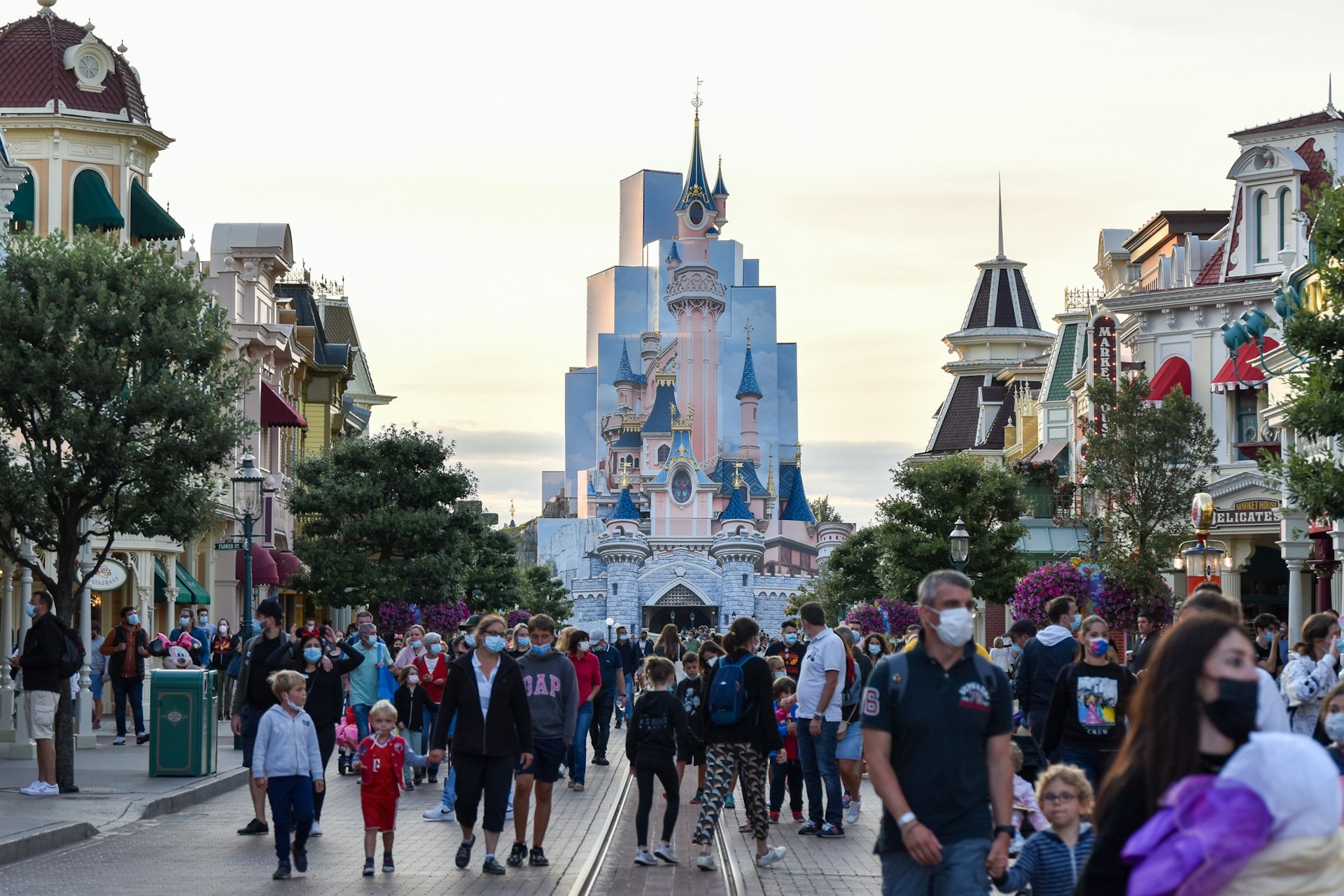
Disneyland Paris is a hit with family travelers
While most visitors will enjoy marveling at relics and palaces from the medieval Kingdom of France, if you're traveling with young ones in tow, it's safe to assume the "kingdom" they're most excited to see is the home of Mickey and Minnie et al. At the vast Disneyland Paris complex is Disneyland Park, home to five themed "lands" with all the classic sights (Sleeping Beauty's Castle, turn-of-the-20th-century Main Street USA), quintessential rides (Pirates of the Caribbean, Big Thunder Mountain...) and larger-than-life characters.
Adjacent to Disneyland Park is the separate Walt Disney Studios Park, where high-tech rides such as the Twilight Zone Tower of Terror, and the delightful Parisian-set Ratatouille are complemented by cinemas, sound stages and behind-the-scenes tours. Deals abound, including tickets covering both parks, so be sure to pre-research and pre-book online.
How to get to Disneyland Paris: Disneyland Paris is 20 miles (32km) east of Paris, and journey time is around 40 minutes by car. Frequent RER A trains run from central Paris to Marne-la-Vallée/Chessy (journey time: 40 minutes to one hour).

Marvel at Château de Chantilly and stroll atmospheric Senlis
Rising up from a shimmering lake, the fairy-tale Château de Chantilly is surrounded by splendid gardens. Priceless paintings fill its Musée Condé, and you can taste the renowned crème Chantilly (sugar-whipped cream), which was invented here. The domain is perhaps best known, however, for its hippodrome (horse-racing track) and stables, the Grandes Écuries, which contain the Musée Vivant du Cheval, with riding-equipment displays, and also mount dressage shows. From here, riding and walking trails fan out into the forested former royal hunting estate, the Forêt de Chantilly.
From the refined town of Chantilly, regular buses (25 minutes) travel 6 miles (10km) east to medieval Senlis, whose narrow cobblestone streets, Gallo-Roman ramparts and towers reward an afternoon's stroll. A royal seat from the 5th century to the early 17th century, Senlis is crowned by the 1191-completed Gothic Cathédrale de Notre Dame, retaining its original stained glass and intricate stone-carved portal. Opposite the cathedral, with ringside views from its terrace, Le Scaramouche serves cutting-edge bistro cuisine.
How to get to Chantilly: Chantilly is 31 miles (50km) north of Paris; one hour away by car. TER train services (direction Creil) link Paris' Gare du Nord with Chantilly-Gouvieux train station (journey time: 25 minutes).
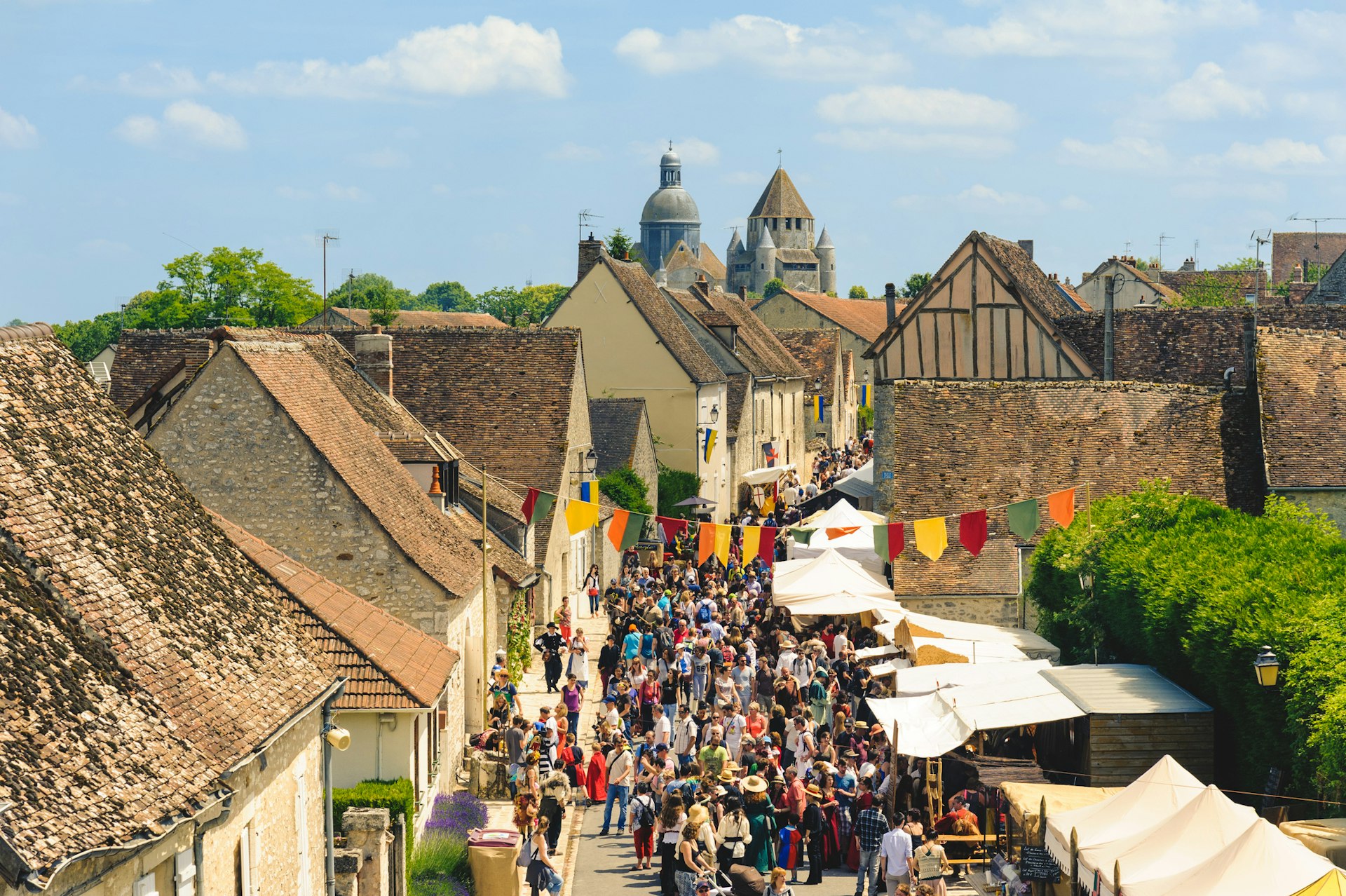
Experience life in medieval times in Provins
The walled town of Provins is listed by Unesco as the "Town of Medieval Fairs", and it certainly does a convincing job of transporting you back into the Middle Ages (though, thankfully, minus the stink, plague, and squalor). The town is home to over 150 medieval structures including the Tour César, the Church of Saint Quiriace and the Grange aux Dîmes, where you can watch a live re-enactment of a medieval market. Elsewhere you can explore the town’s ramparts, fortified gates, and over 6 miles (10km) of underground tunnels.
But it’s the medieval-themed spectacles that most convincingly bring the period to life, making Provins an ideal day trip from Paris for families. Between April and November there are regular displays of falconry, horsemanship, and medieval warfare (complete with trebuchets and jousting), as well as a weekly banquet on Saturday, where you can tuck into medieval food while being entertained by troubadours, acrobats, and jugglers.
How to get to Provins: Provins is located southeast of Paris and can be reached in one hour and 20 minutes by car. Alternatively hop on the P line at Gare de l'Est and disembark at Provins (journey time: one hour 20 minutes).

Follow the many trails through Forêt de Fontainebleau
Cloaking the elegant town of Fontainebleau, the 108-sq-mile Forêt de Fontainebleau is an outdoors paradise, with walking and cycling trails (including mountain-biking tracks), and rock climbing on its sandstone ridges and plunging gorges. Fontainebleau's most impressive human-made site is its château, sprawling over 1900 elaborately gilded, frescoed rooms amid formal French and free-flowing English-style gardens. The original château was built in the early 12th century, but it was radically reconstructed by successive monarchs, most notably François I's Renaissance-style overhaul in the 16th century.
Fontainebleau is also awash with lively local bistros such as Le Bistrot 9, and gastronomic restaurants like terroir-based La Table du Parc. Pick up forest-picnic supplies at wonderful pâtisserie (pastry shop) Dardonville or the bustling town market, which runs on Tuesdays, Fridays and Sundays.
How to get to Fontainebleau: Fontainebleau is 42 miles (68km) southeast of Paris, with the travel time around one hour and 20 minutes in the car. R trains link Paris’ Gare de Lyon with Gare de Fontainebleau-Avon station (40 minutes, up to 40 daily).
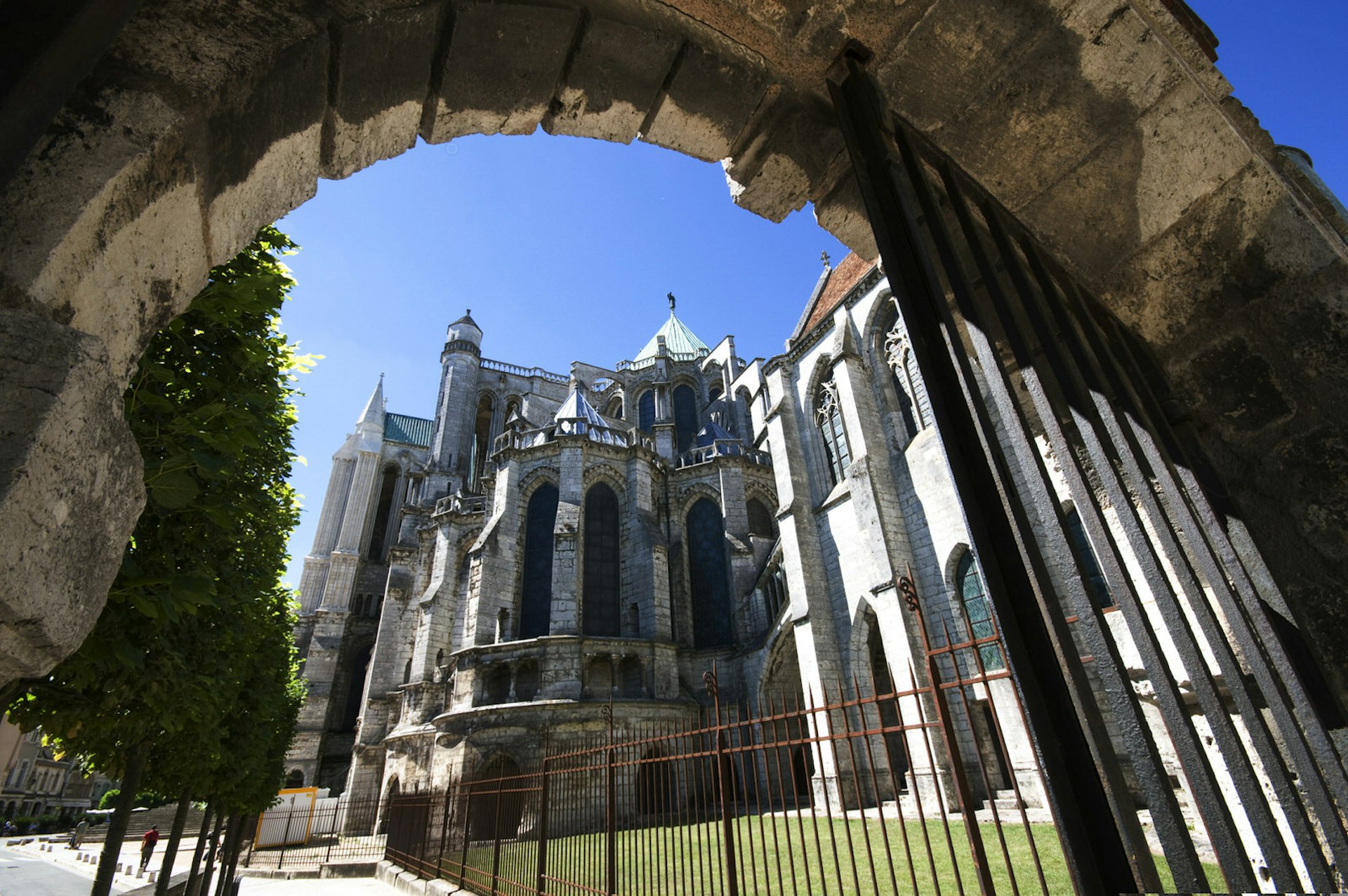
Visit the medieval cathedral in Chartres
France’s best preserved medieval cathedral is Chartres' 13th-century Cathédrale Notre Dame. Built on the site of a Romanesque cathedral that was all but destroyed by the 1194 fire that ravaged Chartres, it's topped by Romanesque and Gothic steeples, and is revered for its 176 luminescent, deep-blue stained-glass windows. The striking structure also houses a number of sacred relics, including the Sainte Voile (Holy Veil), which, it's believed, the Virgin Mary wore during Jesus' birth.
Nearby, you can learn more about stained glass at the Centre International du Vitrail in a half-timbered former granary, and admire the fine-arts collection at the Musée des Beaux-Arts, in the 18th-century Palais Épiscopal (Bishop’s Palace). From Chartres' cathedral, steep streets lined by medieval houses descend to the western channel of the Eure river. Adjacent to a narrow bridge, peppermint-green-painted restaurant Le Saint-Hilaire is a local favorite for its regional menus. In the newer part of town, bistros ring Chartres' iron-canopied market (Wednesdays and Saturdays).
How to get to Chartres: From Paris, Chartres is 57 miles (91km) southwest and can be reached by car in roughly one hour and 30 minutes. Frequent TER trains link Paris' Montparnasse Vaugirard with Chartres' train station (journey time: one hour 15 minutes).
You might also like:
How to get around in Paris in winter, spring, summer or fall
Top things to do in Paris
Things you should know before traveling to Paris
